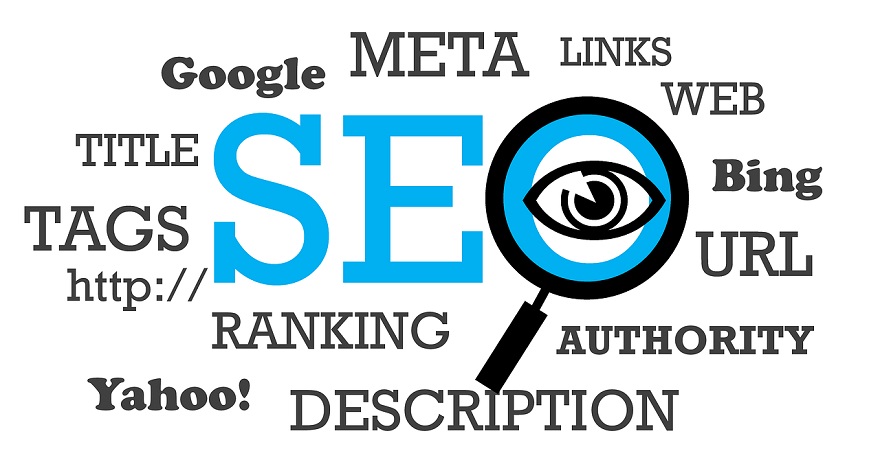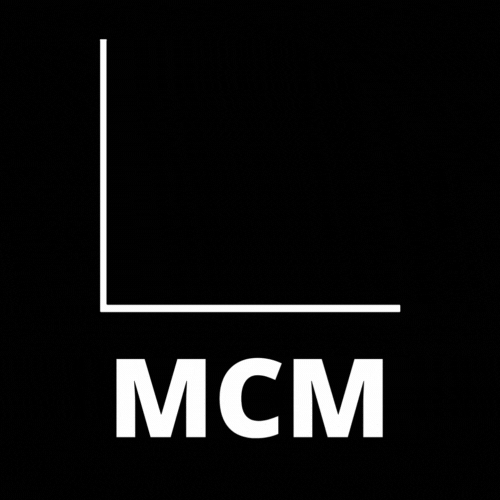Title tags and meta descriptions are HTML elements that provide brief summaries of a web page’s content to search engines and users. Title tags appear as clickable headlines in search engine results pages (SERPs), while meta descriptions appear beneath the title tag and briefly describe the page’s content.

Title Tags and Meta Descriptions For SEO
What You Will Learn From This Guide…
This guide will provide you with a comprehensive understanding of title tags and meta descriptions, and their importance in on-page SEO optimization.
It will provide best practices and common mistakes to avoid when optimizing title tags and meta descriptions, and how to improve a website’s visibility in search engine rankings and attract more clicks to their website from search engine users.
By following the tips and examples provided in this guide, the reader will be equipped with the knowledge and tools to optimize their website’s title tags and meta descriptions and improve their SEO performance.
Why are Title Tags And Descriptions Important
Title tags and meta descriptions play a crucial role in on-page SEO optimization. They help search engines understand the content of a page, which can improve a website’s visibility in search engine rankings. Additionally, well-crafted title tags and meta descriptions can also help attract more clicks to a website from search engine users.
So it is a fine balance for which we craft these two elements. We need to tell Google or any search engine what our page is all about and at the same time make it understandable for the user to know that they are going to get exactly what they want.
Remember this is the first impression you will get for both the reader (will they decide this might be the answer they are looking for) and the search engines (is this content going to satisfy the user’s search intent)?
Title Tags WHAT There Are 2?

Not to confuse you, but yes there are 2 types of titles you need to be aware of. The first is the most important because if you get this wrong your pages will not show up in the search results at all. This is the first hurdle to winning the SEO game. Getting the search engines to show your content in the results pages.
Title Tag
The title tag is an important on-page SEO element that provides search engines with important signals about the content of a web page.
The search engine algorithms use the title tag to determine the relevance and subject matter of the web page and to decide whether the page should be shown to the searcher for a particular search query.
When a user enters a search query into a search engine, the search engine’s algorithm analyzes the title tags of web pages that are relevant to the search query.
If the title tag contains relevant keywords that match the user’s search query, the search engine algorithm is more likely to consider that web page as a good result for the search query.
SEO Title
The SEO title can have a significant impact on how the searcher interacts with the search results and whether they choose to click through to the website.
When a user enters a search query into a search engine, the search engine displays a list of relevant search results.
The SEO title appears as the clickable link for each search result, and it is often the first thing that the user sees when deciding which result to click on.
A well-crafted SEO title can catch the user’s attention, provide an accurate description of the content of the web page, and entice the user to click through to the website.
By using relevant keywords, making the title compelling and attention-grabbing, and accurately describing the content of the web page, website owners can improve the chances of their web page being clicked on by users.
Additionally, an optimized SEO title can help increase click-through rates (CTR), improve user engagement, and ultimately lead to more conversions and business success.
Therefore, it’s important for website owners to include relevant keywords in their title tags and ensure that they accurately describe the content of the page.
Doing so can improve the visibility of the web page in search engine rankings and increase the likelihood of it being shown to searchers for relevant queries.
Keyword Research
That is why before we actually write content we do Keyword Research to find the words people are actually typing in the search pages to find what they are looking for.
This research will also tell you the type of content you should write for the search intent. remember there are 4 types of search intent.
- Informational intent: This type of search intent is when a user is seeking information on a particular topic. The user is looking to learn something or answer a question, and the search query often includes words like “how,” “what,” “why,” or “best.”
- Navigational intent: This type of search intent is when a user is looking for a specific website or web page. The user is familiar with the website and is using the search engine to quickly navigate to the site or page.
- Transactional intent: This type of search intent is when a user is looking to make a purchase or engage in some other type of transaction. The user is looking for a specific product or service and may use search terms like “buy,” “order,” or “book.”
- Commercial investigation intent: This type of search intent is when a user is conducting research on a product or service with the intention of making a purchase in the future. The user is not yet ready to make a purchase but is gathering information to make an informed decision.
Understanding The Importance Of Title Tags and SEO Titles
So as you can see there are a lot of things at play just to get your content to render in the Search Results Pages or (SERPs). But then we haven’t talked about the Meta Description yet which will be the deciding factor for the searcher as to whether they are going to click through to your content or not.
The Importance Of The Meta Description
What Are Meta Descriptions
Meta descriptions are elements that provide a brief summary of a web page’s content. They are displayed beneath the title tag in search engine results pages (SERPs) and can be used to entice users to click through to the website.

The meta description is an opportunity for website owners to provide more information about their web page, and to entice the user to click through to the website.
A well-crafted meta description can catch the user’s attention, provide an accurate summary of the content of the web page, and persuade the user that the web page has the information or solution they are seeking.
By using relevant keywords, making the meta description compelling and attention-grabbing, and accurately summarizing the content of the web page, website owners can improve the chances of their web page being clicked on by users.
Additionally, an optimized meta description can help increase click-through rates (CTR), improve user engagement, and ultimately lead to more conversions and business success.
It’s important to note that while the meta description is not a direct ranking factor, it can indirectly impact search engine rankings by increasing user engagement metrics, such as CTR.
Therefore, optimizing the meta description is a crucial component of on-page SEO optimization and can lead to increased visibility, traffic, and business success.
Best Practices When Writing Meta Descriptions
When writing meta descriptions, there are 3 best practices to keep in mind.
- First, it’s important to keep the meta description between 150-160 characters in length, as search engines may truncate longer descriptions.
- Second, include relevant keywords in the meta description to signal to search engines what the web page is about. However, avoid keyword stuffing, which can harm the readability and effectiveness of the meta description.
- Third, make the meta description compelling and attention-grabbing to entice users to click through to the website. It’s essential to accurately summarize the content of the web page in the meta description and provide value to the user.
Finally, avoid using duplicate meta descriptions across multiple pages, as this can harm the web page’s visibility in search engine rankings. By following these best practices, website owners can improve the effectiveness of their meta descriptions and increase click-through rates (CTR) and user engagement.
4 Common Mistakes To Avoid When Writing Meta Descriptions
- First, failing to include a meta description on a web page can harm the web page’s visibility and click-through rates (CTR).
- Second, keyword stuffing in the meta description can harm the readability and effectiveness of the meta description and can lead to a penalty from search engines.
- Third, creating a meta description that is too long or too short can result in the description being truncated, or lacking sufficient information to entice users to click through to the website.
- Fourth, failing to make the meta description compelling and attention-grabbing can result in the web page being overlooked by users, and thus, harm the website’s click-through rates (CTR).
Finally, using the same meta description across multiple pages can lead to duplicate content issues, which can harm the website’s visibility in search engine rankings. By avoiding these common mistakes, website owners can improve the effectiveness of their meta descriptions and increase click-through rates (CTR) and user engagement.
How Do Search Engines Choose Which Content Is Worthy

The question might be “How do search engines choose between two pieces of content that are similar“?
In SEO, not all search engines are equal
Many beginners wonder about the relative importance of particular search engines. Most people know that Google has the largest market share, but how important it is to optimize for Bing, Yahoo, and others? The truth is that despite the existence of more than 30 major web search engines, the SEO community really only pays attention to Google. Why? The short answer is that Google is where the vast majority of people search the web. If we include Google Images, Google Maps, and YouTube (a Google property), more than 90% of web searches happen on Google — that’s nearly 20 times Bing and Yahoo combined.
moz.com
Search engines use complex algorithms to determine which content to render in the search results when there are two or more pieces of content that are similar. While there is no single answer to this question, several factors influence how search engines choose which content to display in the search results.
- First, search engines consider the relevance of the content to the search query. If one piece of content has a closer match to the user’s search query than the other, it may be displayed more prominently in the search results.
- Second, search engines consider the quality and authority of the content. If one piece of content is more trustworthy, credible, and informative than the other, it may be displayed more prominently in the search results.
- Third, search engines consider user engagement metrics, such as click-through rates, bounce rates, and time spent on the page. If one piece of content has a higher engagement rate than the other, it may be displayed more prominently in the search results.
- Forth, search engines consider other factors such as the freshness of the content, the website’s overall authority and trustworthiness, and the user’s location, device, and search history.
While there is no single answer to how search engines choose which content to render in the search results between two pieces of similar content, website owners can improve their chances of being displayed more prominently.
By creating high-quality, relevant, and engaging content that meets the user’s needs and expectations. Additionally, website owners can optimize their content for on-page SEO, build high-quality backlinks, and monitor their user engagement metrics to improve their search engine rankings and visibility.
Conclusion
The importance of title tags and meta descriptions for SEO
Title tags and meta descriptions are critical components of on-page SEO optimization.
They help search engines understand the content of a page, which can improve a website’s visibility in search engine rankings. Additionally, well-crafted title tags and meta descriptions can attract more clicks to a website from search engine users.
To improve a website’s SEO, website owners should optimize their title tags and meta descriptions by following best practices and avoiding common mistakes. By doing so, they can improve their visibility in search engine rankings and attract more clicks to their website.
If you need help with all this please visit my website Milford CT Marketing or call 860-566-8987


